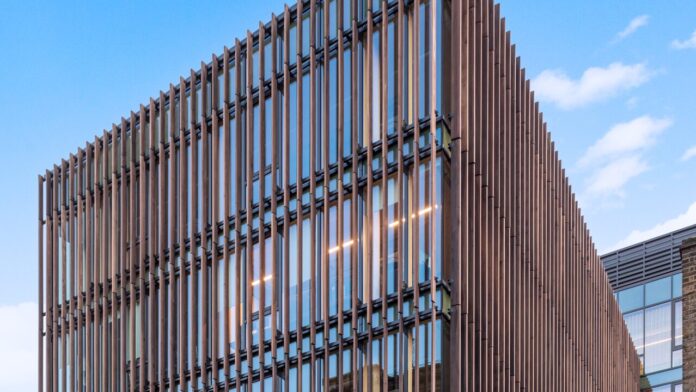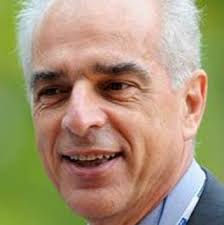Day two of PBFD 2025 opened with Professor Mikkel K. Kragh, Head of Civil and Architectural Engineering at Aarhus University, setting the tone for a cross-disciplinary day focused on sustainable façades as drivers for climate adaptation and high-performance architecture. Professor Mikkel Kragh emphasized the transformative power of collaboration, encouraging participants to move beyond traditional silos and integrate architectural, engineering, and regulatory expertise. He framed façades not only as the visual and technical boundaries of buildings, but as vital systems influencing energy, resilience, and urban sustainability.
This second day’s panel brought together an outstanding line-up: Professor Mikkel K. Kragh introduced Marino Mazzon (Engineers of Venice), Lars Anders (Priedemann), Mitsu Edwards, Damian Rogan, Lisa Rammig, Alessandro Baldini (all from Eckersley O’Callaghan), Thomas Winterstetter (Werner Sobek), and PBFD’s curator Angela Mejorin. Their cross-disciplinary perspectives, technical depth, and practical strategies turned PBFD into an arena where leading voices converge to share proven approaches, challenge each other, and push the boundaries of what facade engineering can achieve. One message is clear: the shift to sustainability and circularity is now imperative, but existing regulation and market practices are struggling to keep up.
Engineering Action for Climate: Marino Mazzon’s Call to Decarbonize
Representing the Climate Change Working Group of the Engineers of Venice, Marino Mazzon addressed the industry’s pressing mandate to decarbonize. Drawing on the group’s position paper, he outlined two pillars: acting on climate causes (mitigation) and responding to climate effects (adaptation). Marino Mazzon cited global net greenhouse gas emissions trends and called for regulators to act based on scientific consensus, not inertia.
His rallying cry “May the force be with you, none of us can accept inaction; each must act, and transition is possible” was reinforced with practical imperatives for cities, buildings, and especially façades. He underscored the role of envelope performance not just in efficiency, but in climate-adaptive design, referencing studies aimed at making net-zero cities feasible by 2050. Marino Mazzon closed by reminding the audience that façade design must employ passive strategies and drive holistic carbon mitigation across urban sectors.
Predictive Maintenance and Circularity: Lars Anders’ R-IoT Solution (Priedemann)

Lars Anders, representing Priedemann, advanced technical and circularity themes with the R-IOT concept, combining cyber-physical monitoring with predictive maintenance to extend façade life and support circularity. He highlighted the logic that new builds alone cannot meet energy targets while transforming existing assets offers a pivotal pathway.
Emphasizing the need for transformation of existing building stock to meet energy and sustainability goals, Lars Anders highlighted the importance of learning from past failures to inform safer, more resilient facades for the future. Reflecting on Weser Tower’s failure in Bremen, which experienced a major façade failure in 2011 when a cladding panel detached during a storm, he stressed that predictive maintenance and real-time monitoring could help prevent such hazards.
Integrated sensors and digital twin interfaces can identify early symptoms of system failure, enable targeted interventions, and ensure that safety, durability, and structural performance are continuously assured throughout a façade’s lifecycle.
As an example the R-IOT system integrates continuous sensor monitoring via IoT. Its modular and reversible design fosters longevity and supports circular economy principles, spanning recyclable materials, adaptable components, and ease of reuse.
Lars Anders also compared service models borrowed from automotive industries, showcasing customer-centric approach where car owners receive alerts about engine failures or scheduled maintenance operations.
Beyond these data management approach, he called for the facade sector to embrace design-for-disassembly, better understanding lifecycle stages of facade materials: for example 40-60 years for structural layers, but only 5-15 years for interior layers.
“Retrofit, he stressed, represents untapped value; yet today’s industry lacks a functioning aftermarket for used facade materials, still defaulting to waste“. To close the loop, Lars Anders proposed a new retrofit ecosystem, referencing R-IOT’s success in the Metals in Construction 2024 Design Challenge, he places predictive maintenance and its circular promise at the forefront of contemporary facade engineering.
Façade Circularity in Global Practice: Mitsu Edwards, Damian Rogan, Lisa Ramming, Alessandro Baldini (Eckersley O’Callaghan)
In a compelling multi-speaker panel, directors from Eckersley O’Callaghan’s global offices shared real-world strategies for adaptive reuse and circularity across France, USA, UK, and Italy. Their survey of more than 50 facade professionals in Belgium revealed significant market barriers: technical challenges, cost pressures, uncertainty, legal and human factors, and fluctuating demand and supply. The panel’s review also showed that, in Europe, 80% of 2050’s built environment already stands, highlighting the strategic opportunity of retrofit.

France: Accelerating Policy & Practice
The French context is driven by a rapidly evolving regulatory framework that puts circularity and material auditing at the center of renovation projects. Mitsu Edwards, Director at EOC Paris, explained that regulations born from the Paris Agreement of 2021 increasingly require material audits, like the PEMD (Permis Equipement Matériau Déchet), prior to large-scale façade works. High-profile projects such as the UNESCO Headquarters renovation, 47 Austerlitz, Mirabeau Tower, and Orion show how reused façade components, including stone and glass, can be successfully integrated into both modern and historically significant buildings. The French approach reflects dynamic policy intersecting with real market action, leading to process innovation and renewed investor and public trust in ambitious adaptive reuse.

United Kingdom: From Policy Tension to Retrofit-First
Following Damian Rogan, Director at EOC London, the UK’s façade market showcases a tension between public and private drivers, but is leading the way in retrofit-first planning policy. In key London districts, local regulations now require designers to consider maintaining and reusing existing façades before considering demolition. A systematic approach has emerged: starting with carbon optioning to compare new-build versus reuse, followed by circularity audits to catalogue re-usable elements, and culminating in design proposals tailored to both performance and circularity. Case studies reveal the growing influence of these policies, encouraging innovative designs and collaboration across the supply chain, even as standardization and scalability remain ongoing challenges.

United States: Grassroots Initiatives and the Recycling Gap
Lisa Rammig, Director at EOC Los Angeles, introduces the US market as defined by contrasting state-level sustainability commitments and innovative grassroots initiatives. While federal climate policies may be inconsistent, 22 states have joined the Climate Change Alliance to promote action. Every year, the US generates 12 million tons of post-consumer glass – 31% of which is recycled for bottles, while flat glass recycling remains almost non-existent. Unused flat glass sometimes finds new life as artisanal cast glass. Platforms like glazingrecovery.org (from the NGA) and the World of Glass Map have emerged to promote the recovery, mapping, and reuse of glazing materials. Despite regulatory hurdles, architects and engineers push forward with experimentation and community-driven solutions shaping new material cycles.
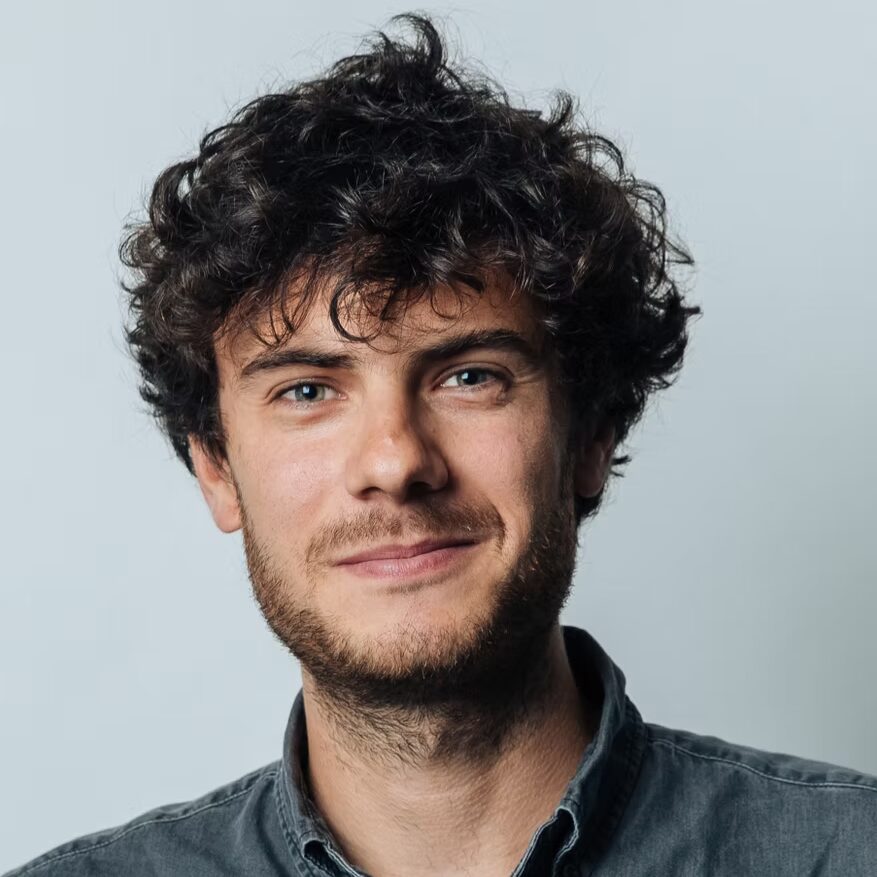
Italy and Southern Europe: Untapped Potential
Italy and Southern Europe reveal both untapped potential and increasing momentum for façade circularity, says Alessandro Baldini, Director at EOC Milan. Regional and municipal policies are gradually adapting, and forward-thinking clients are beginning to pursue circular strategies—though large-scale adoption is still emerging. For public projects, Extended Product Responsibility (EPR) and CAM Edition regulations are in force: at least 70% of waste must be recycled, and all building materials must meet minimum durability and disassembly standards, with mandates for a recycled percentage in new facades. In private projects, circularity is now essential to attract ESG investments and meet one of the EU’s six core sustainability objectives. The transformation is underway, with the promise of local innovation poised to scale as regulatory and market forces converge.
Each director’s local expertise underscores a shared truth: while barriers to facade circularity persist, whether technical, financial, or regulatory, market leaders are building momentum through policy shifts, pilot projects, and collaborative approaches. The group concluded that cross-country experience catalyzes innovation and helps clear barriers to broader adoption of circular façade practices. Building on this insight, they called for adaptability, transparent impact measurement, and a willingness to connect emerging best practices across borders.
High-Tech, Adaptive, and Sustainable: Thomas Winterstetter’s Envelope Technologies
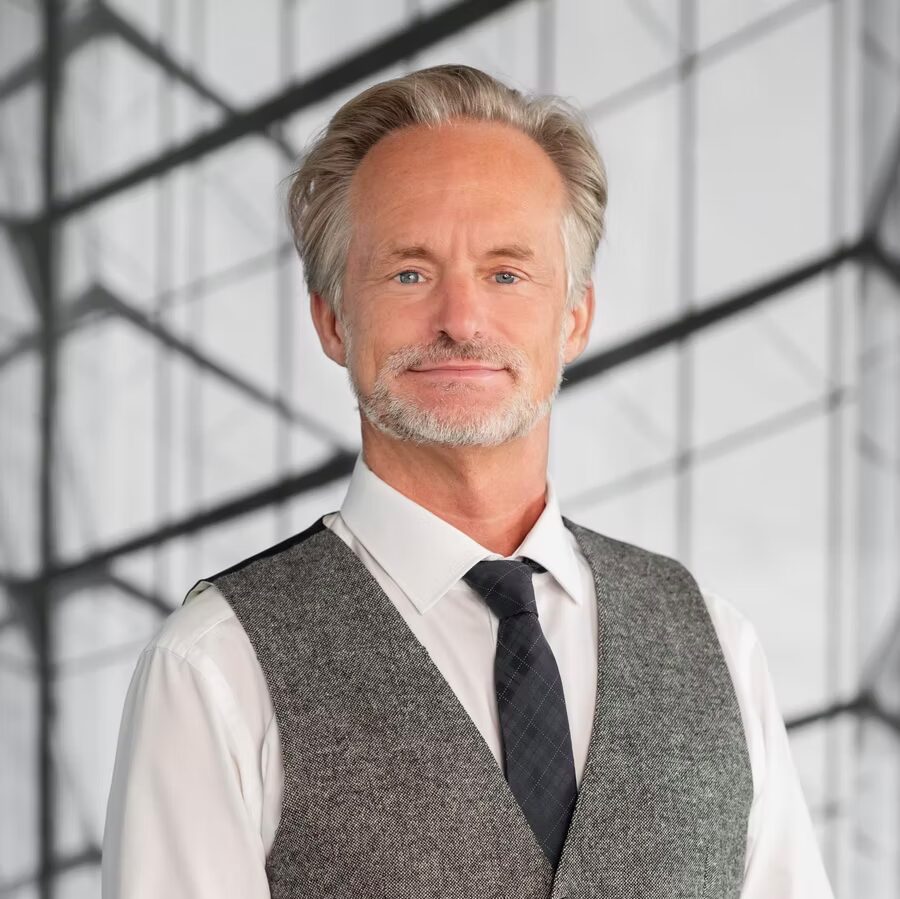
Thomas Winterstetter, Werner Sobek Group, closed the event’s technical presentations with a showcase of cutting-edge envelope systems that balance sustainability and long-term adaptability. “We don’t have an energy problem, we have an emissions problem,” he remarked, framing the challenge as one of efficient implementation.
Winterstetter presented fabric and membrane-based facades such as floating Dock 10 in Hamburg, the ThyssenKrupp’s twisted Test Tower in Rottweil, and the stadium in St. Petersburg, illustrating design flexibility and new expressive forms. He highlighted several other iconic projects such as the National Museum of Qatar (inspired by desert roses), Lusail Plaza Tower in Doha, and the Wash Tower Dubai. Each showing how free-form and creative geometries are enabled by advances in materials engineering.
On the topic of recycling, Winterstetter presented the NEST project’s “Urban Mining and Recycling” unit in Dübendorf, Switzerland. A case where urban-scale circularity is already being practiced. He also emphasized human-centric design, with green façades (The project KII in Düsseldorf, Europe’s Largest Green Facade) and intelligent glazing now supporting well-being with enhanced solar-optical performance. Sobek’s recent work on electrochromic glass increases control and well-being by tuning light transmission, as exemplified in Lombard Odier’s Geneva headquarters. Winterstetter’s position is clear: Modern facades must be “adaptive systems”. Not passive barriers, but dynamic contributors to energy use, comfort, and building relevance. In his conclusion he called for continued integration of innovative materials and ongoing attention to recycling and durability as the industry evolves.
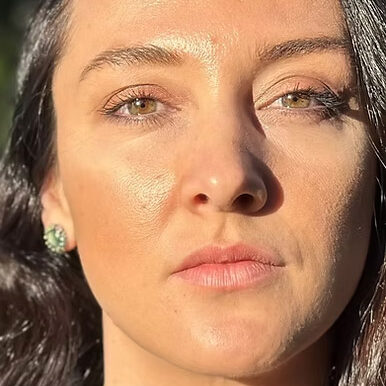
Looking Forward: Angela Mejorin’s PBFD Mission and 2026 Announcements
Angela Mejorin, PBFD founder and curator, concluded the conference by reiterating the mission: to create an independent, multidisciplinary platform for technical excellence and entrepreneurial opportunity. She highlighted PBFD’s specialist-level knowledge sharing and technical debates, its curated format, and partnerships with academic and industrial leaders.
Angela Mejorin outlined PBFD’s growth: engagement with international challenges in 2023, focus on reflective technologies in 2024, and the advisory group’s creation in 2025. Looking toward PBFD 2026, she issued a call for book articles for publication with Springer Nature Editions in spring 2026. This book will collect insights on latest facade technologies, design solutions, and case studies, from key contributors of the first 3 editions of PBFD. Angela announced the 2026 PBFD Seminar’s theme “Durable Facades”. On November 3rd, 2025, the Call for Ideas will be opened and who is interested to speak at the conference can propose a talk. As mentioned on PBFD website, the curator is already dealing with companies interested in taking an active role at the 2026 edition, supporting PBFD mission, to discuss about secured speeches, Workshops, Off-site Activities’ partnerships, and the Grand Finale event’s related opportunities.
The PBFD platform fosters not just technical growth, but industry-wide advocacy for holistic, future-driven envelope engineering. In this perspective, Angela stressed ongoing architectural education and encouraged institutions to connect for further collaboration.
Conclusion: Benchmarks for the Next Generation of Facades
PBFD Venice 2025 was defined by visionary leadership, collaborative engagement, and technical rigor. From decarbonization strategies to circular economy integration, predictive monitoring to high-tech adaptive systems, the conference demonstrated that building envelopes are now levers for transformative change across design, engineering, and regulation.
https://www.performancebasedfacadedesign.org
Facade Today is proud to showcase these bold explorations, which signal a highly innovative phase in contemporary practice. The benchmarks set in Venice now inform the qualities future façades must embody: resilience, adaptability, sustainability, and human-centered performance.
Stay tuned for more in-depth coverage. The next article will feature interviews with leading voices as Facade Today follows the evolving dialogue in facade engineering and architecture through PBFD and beyond.
Some project featured during these presentations
The Black & White Building in Shoreditch, East London
Architect: Waugh Thistleton
Façade Consultant: Eckersley O’Callaghan
Photo credit: courtesy of Eckersley O’Callaghan
Photo credit: courtesy of Ed Reeve and Fred MacGregor
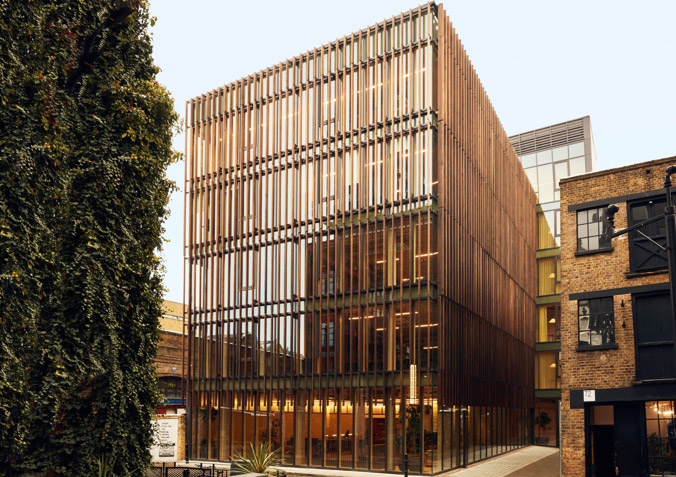
The Black & White Building in Shoreditch, East London, designed by Waugh Thistleton Architects with facade engineering by Eckersley O’Callaghan, exemplifies sustainability and circularity in office construction. Using engineered timber for its structure and facade, the building achieves 37% less embodied carbon than comparable concrete designs. All components are demountable, supporting future reuse and a circular economy, while integrated shading fins and renewable energy systems enhance operational efficiency.
The UNESCO Building retrofit in Paris
Architect: Patriarche Architecture
Façade Engineering: Eckersley O’Callaghan
Photo credit: courtesy of Patriarche Architecture
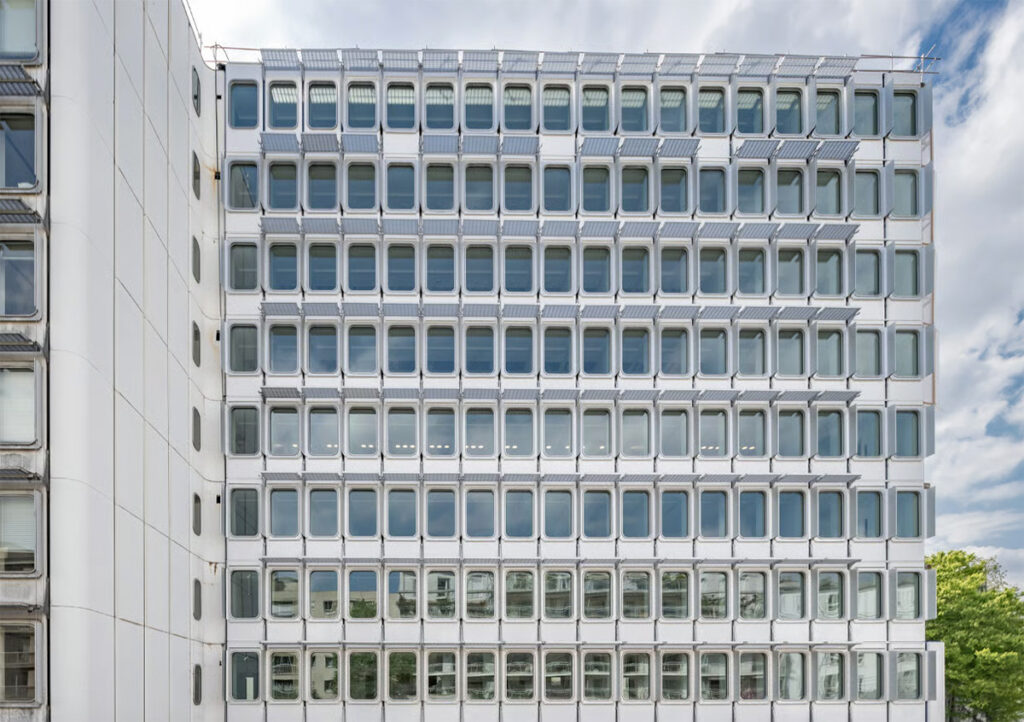
The UNESCO Building retrofit in Paris, designed by Patriarche with facade engineering by Eckersley O’Callaghan, is a benchmark in circular renovation. The existing flat glass panels were carefully dismantled, sent to Ares for cullet production, and remelted by Saint-Gobain for new high-performance facades. This closed-loop glass recycling approach saved approximately 30 tonnes of CO₂, demonstrating how collaborative design can advance sustainability in historic urban architecture.
Lombard Odier’s new Geneva headquarters
Architects: Herzog & de Meuron
Facade engineering: Werner Sobek
Photo credits: Maris Mezulis
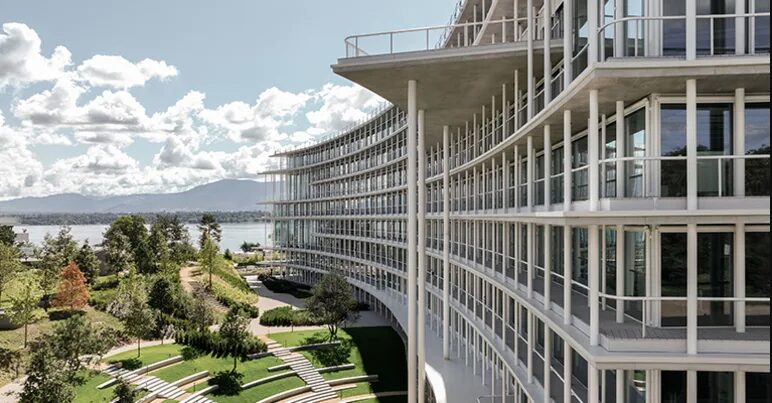
Lombard Odier’s new Geneva headquarters, designed by Herzog & de Meuron with façade engineering by Werner Sobek AG, embodies a forward-thinking approach to glass quality. The fully glazed façades optimize natural light and transparency, while advanced glass performance, including solar control and electrochromic features, enhances occupant comfort and energy efficiency. The project demonstrates a holistic integration of aesthetics and high-performance envelope technology, setting new standards for sustainable office design.
Facade Today is Media Partner of Performance-Based Facade Design 2025.
As part of this partnership, Facade Today supports the event with editorial coverage, digital visibility, and content amplification, helping ideas travel further across the facade engineering and architecture community.
Are you organizing an event related to façade design, smart materials, sustainable construction, or architectural innovation?
Let’s talk! We’re always open to media partnerships that align with our editorial mission and bring value to our readers.
Reach out to us at editor@facadetoday.com
We’d love to hear about your event.

As the Editor of FacadeToday.com, I merge my passion for Design, Architecture and Technologies with three decade of experience collaborating with entrepreneurs across many industries. My career has centered on fostering innovation, scaling business opportunities, and bridging gaps between technical experts, business developers, and creative visionaries. I thrive at the intersection of sustainable solutions, material advancements, and smart technologies, curating insights on themes like energy-efficient facades, smart tech, and advanced manufacturing. With a commitment to lifelong learning, I aim to empower architects and facade engineers by translating innovations into actionable knowledge, driving the industry forward through purposeful connectivity and cutting-edge practices.


